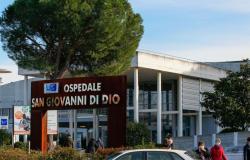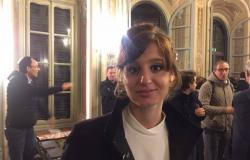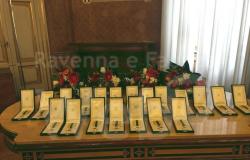That the blasphemous exhibition in the church of Sant’Ignazio di Carpi is closing prematurely is good news, but there are still many things to clarify and also wounds to heal. Blasphemous exhibition – we remind you – for the sexual representations of Jesus and the Madonna; and moreover organized by the diocese of Carpi (now dependent on that of Modena), which has not stopped defending its content and the intentions of the artist, Andrea Saltini.
As already mentioned in another article, it was Saltini himself to announce the closure of the exhibition, motivating it with his own “precarious state of health” caused by the attack he suffered last March 28 and by the demonstrations of dissent, as well as with the costs he says he will have to bear for his own and his visitors’ “safety” of the exhibition. The solidarity of the diocese was immediate and was equally angry with “the succession of hate attacks” against the artist and the pastors of the Church of Carpi.
Playing the role of victims, bishop and artist thus thought they had found a way out of a situation that had become unsustainable. Certainly not for the violence and excesses of those who protested the exhibition, which did not occur, unless one considers the rosaries of reparation in the street in front of the exhibition venue to be violence. But due to the evidence of a work that is absolutely incompatible with a sacred space (and also with a profane space, to be honest); and for the growing doubts regarding the attack reported by Saltini last March 28, when the most controversial work was damaged (Inri-San Longino) and the artist himself reported having been injured by the attacker.
And coincidence has it that the announcement of the closure of the exhibition arrived just a few hours after the New Daily Compass published an article in which, citing investigative sources, it reported the many obscure points regarding the reported attack: the lack of witnesses, the impossibility of reconstructing the identikit of the alleged attacker, the many inconsistencies regarding the ways in which the crime allegedly occurred .
In reality, some oddities emerged right away: meanwhile the first reconstruction, which spoke of a stabbing in the artist’s neck, was denied the following day, reduced to a wound on the chin due to a brief scuffle. Then, a more unique than rare case, not even a photograph to testify to the damage suffered by the work and the injuries suffered by the artist. And when the work finally reappeared last week, after 15 days, it featured drawings made with the paint can and well-studied cuts to the canvas and therefore hardly compatible with an impulsive, rapid and violent action. And again: the elusive attacker disappeared into thin air, with no element capable of leading to identification, apart from the fact that he was two meters tall.
All elements that certainly do not authorize any conclusionsbut combined with the rumors filtered yesterday by sources close to the investigators and reported by Compass, push us to at least ask to get to the bottom of this matter. Also because the episode of the attack was unscrupulously used, especially by Bishop Erio Castellucci and other representatives of the diocese, to overturn defamatory accusations on those who – like us – immediately stigmatized the Carpi exhibition; and to insult and delegitimize the hundreds of faithful who participated in the reparation rosaries and the tens of thousands from all over Italy who signed an appeal to close the blasphemous exhibition. And yesterday’s statement from the diocese is further confirmation of this.
The bishop of Modena and Carpi himself bears the grave responsibility of not having listened to the many faithful who felt offended by an artistic exhibition which, at the very least, should have been judged inappropriate in a church. You did not have the common sense, once the case broke out and having also declared that you had not seen the exhibited paintings before, to take action by promptly closing the exhibition or having it moved elsewhere. On the contrary, he defended on principle even the indefensible, preferring to throw poison on the faithful; and also using his position as vice-president of the Italian Episcopal Conference (CEI) to mobilize even the CEI newspaper, Futureto throw further mud on those who legitimately publicly demonstrated dissent for that blatant blasphemy.
With his senseless obstinacy, Monsignor Castellucci it caused a deep and painful wound in the fabric of the Church not only in Modena; he created division, only to then accuse those who disagreed with the initiative of dividing the Church, as if unity consisted in blindly following any whim of a bishop. This is true clericalism, so often stigmatized by Pope Francis. May at least the closing of this sad chapter serve to make pastors reflect, perhaps making them rediscover the true mission of the Church.
Tags: blasphemous exhibition Carpi closed wounds Church remain






